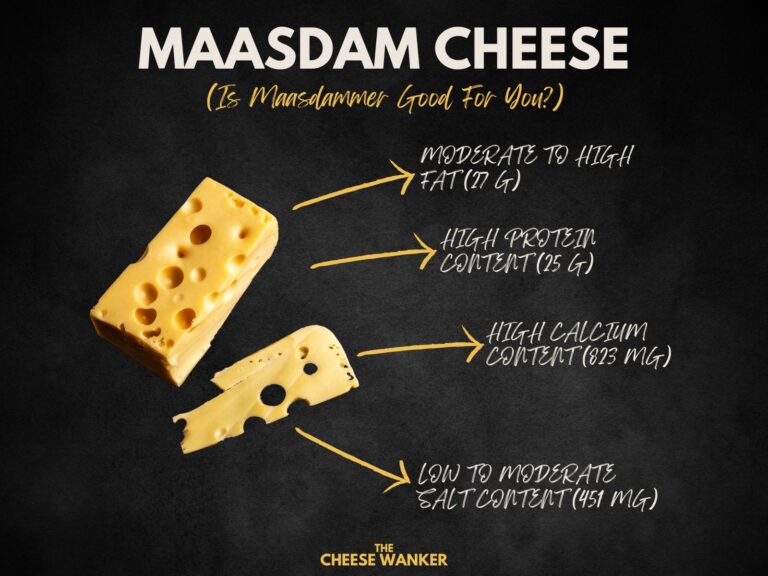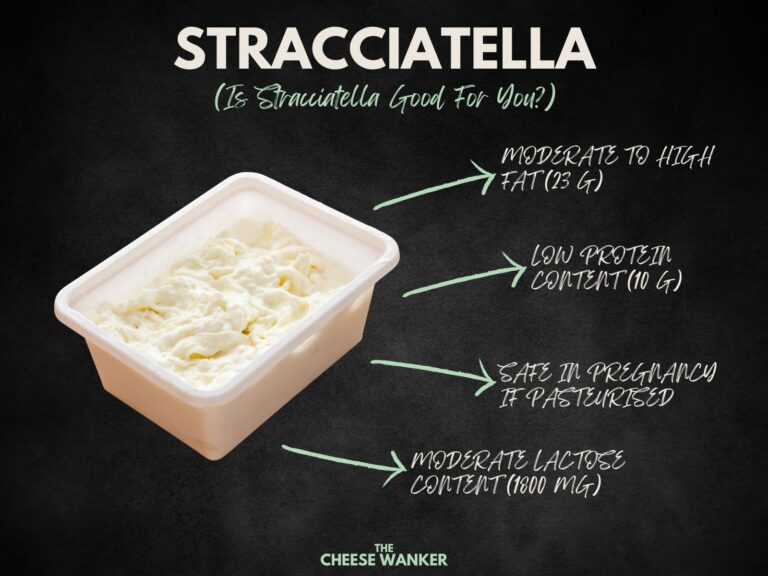Oaxaca cheese is renowned for its unique texture and flavour, making it a versatile choice for a variety of dishes. Beyond its culinary appeal, it is imperative to understand the nutritional composition this pasta filata cheese to make informed dietary choices. In this scientific exploration, we delve into the nutrition facts for Oaxaca.
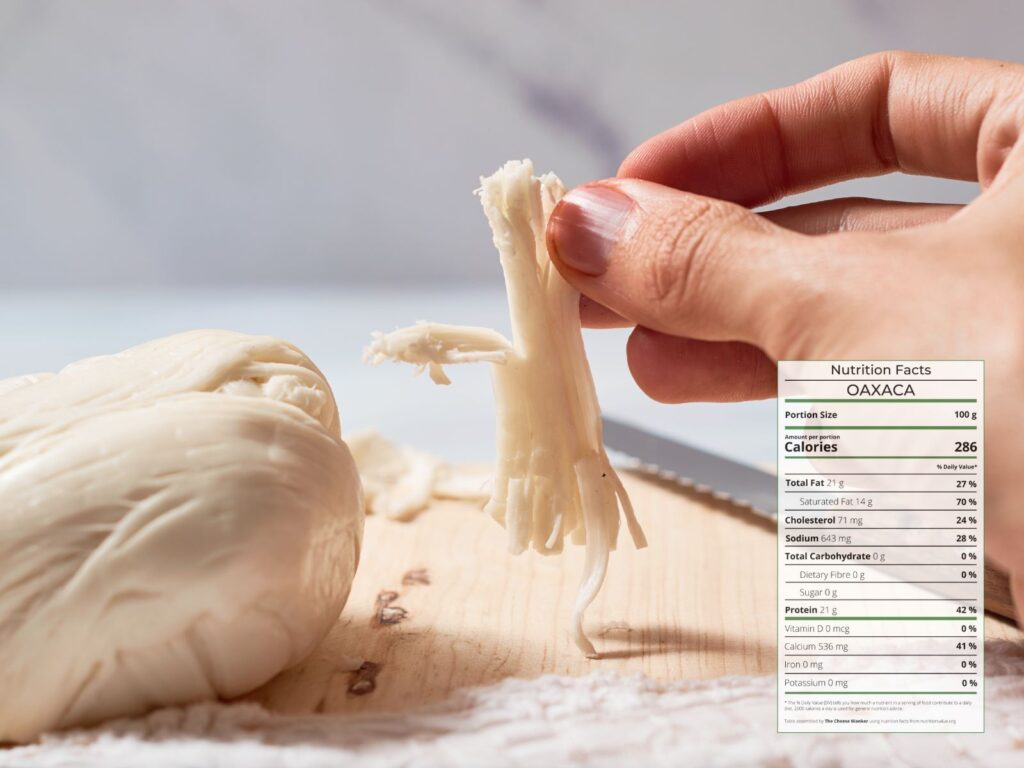
SEE ALSO: Nutrition facts for popular world cheeses in The Cheese Wanker’s index →
What is Oaxaca?
Oaxaca, often referred to as “Quesillo”, is a semi-soft, white cheese known for its stringy texture. It is made from cow’s milk and belongs to the pasta filata cheese family. With its origin rooted in the picturesque landscapes of Oaxaca, this cheese carries the essence of Mexican culture and cuisine.
Its organoleptic properties are a sensory delight, with a unique texture resembling melted Mozzarella, a milky aroma and a mild, slightly tangy taste.
This cheese’s versatility shines in both traditional Mexican dishes like Tlayudas and modern culinary creations. Shredded, crumbled, or torn, Oaxaca adds an authentic touch to your culinary adventures, beckoning you to explore the vibrant world of Mexican cuisine.
Nutrition fact sheet
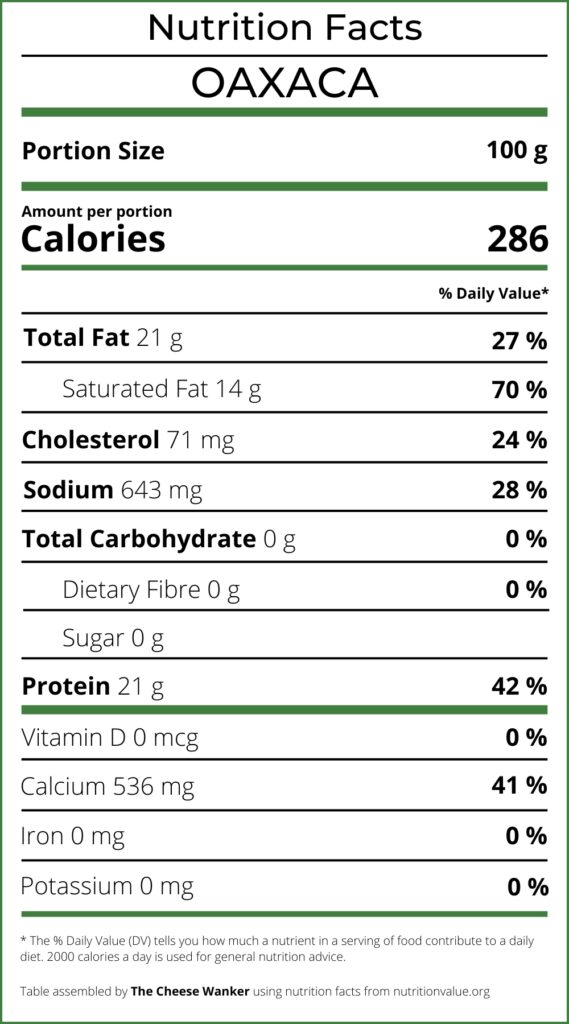
Country of origin
Mexico
Type of Cheese
Milk
Cow
Examples
Quesillo, That’s Amore Oaxaca, Queso Palmito
Benefits
Low Lactose Content, Moderate Fat Content, Moderate Protein Content, Safe in Pregnancy (Pasteurised)
Considerations
Milk Protein Intolerance, Moderate to High Salt Content
Nutritional review for Oaxaca
Eating healthy plays a pivotal role in maintaining overall well-being and preventing chronic diseases. A balanced and nutritious diet provides our bodies with essential vitamins, minerals, and macronutrients, fuelling optimal physical and cognitive function.
With this in mind, let’s have a look at some of the key nutrition facts for Oaxaca.
Lactose Intolerance
Oaxaca offers a promising option for lactose-intolerant individuals who cherish cheese but wish to avoid digestive discomfort. While it does contain lactose, the levels are significantly lower than in fresh milk, making it more tolerable for some.
Since individual tolerance levels vary, it’s crucial for lactose-intolerant cheese lovers to monitor their body’s response when incorporating Oaxaca into their diets.
The versatility of Oaxaca cheese in the kitchen further enhances its appeal for lactose-intolerant individuals. When melted, this cheese becomes less dense, potentially aiding lactose digestion. Popular dishes like Quesadillas and baked casseroles can be excellent choices for enjoying Oaxaca cheese’s unique flavour and texture without compromising digestive comfort.
Ultimately, Oaxaca cheese can be a delicious addition to the diets of lactose-intolerant cheese enthusiasts, offering a bridge between their love for cheese and their dietary needs.
Fat Content
Oaxaca cheese, with its enticing taste and stringy texture, beckons cheese aficionados, but understanding its fat content is essential for those conscious of their dietary choices.
Comprising approximately 21 grams of fat per 100 grams, this cheese falls into the moderate-fat category. Therefore, it offers both culinary pleasure and nutritional considerations.
Moreover, Oaxaca primarily consists of saturated and monounsaturated fats, which together constitute its fat content. While this cheese may not be considered low-fat, it provides a balanced fat profile that can be part of a healthy diet when consumed in moderation.
You can learn more about the different types of fat in cheese and which cheeses have the lowest fat content here.
Cholesterol Content
On average, Oaxaca contains around 71 milligrams of cholesterol per 100 grams. Understanding the cholesterol content in this cheese is crucial for those conscious of their dietary choices.
Recent research challenges the once-established notion that dietary cholesterol significantly impacts blood cholesterol levels. Consequently, moderate consumption of Oaxaca , as part of a balanced diet, is unlikely to have a substantial effect on most individuals’ cholesterol levels.
In essence, Oaxaca can be enjoyed sensibly as part of a healthy diet, offering its unique flavour and texture without posing a significant risk to cardiovascular health when consumed in moderation.
You can read our myth-busting take on whether cheese is bad for cholesterol here.
Protein Content
Clocking in at approximately 21 grams of protein per 100 grams, Oaxaca offers a noteworthy protein profile. Of course, the primary protein source in this cheese is casein, a high-quality protein that provides essential amino acids.
Furthermore, casein’s slow-digesting nature makes Oaxaca a valuable addition to meals for individuals seeking to meet their protein requirements.
Protein plays a vital role in various bodily functions, including muscle growth, immune system support and overall well-being. Incorporating Oaxaca cheese into your diet can help you maintain these functions while enjoying this delicious Mexican cheese.
Whether you’re aiming to support your muscle health or simply looking for a protein-rich addition to your meals, Oaxaca’s protein content makes it a valuable dietary choice.
Want to find out which cheeses have the highest protein content? Click here for our blog post covering cheeses with the highest protein content.
Safety in Pregnancy
During pregnancy, dietary choices become crucial for the health and well-being of both the mother and the developing foetus.
Oaxaca can be a safe and nutritious option for pregnant women, provided it is made from pasteurised milk. Pasteurisation, a heat-treatment process, eliminates harmful bacteria that can pose risks during pregnancy.
Therefore, when selecting Oaxaca, it’s essential to ensure it is made from pasteurised milk to mitigate potential foodborne illness risks. When dining out or buying cheese from local markets, it’s advisable to inquire about the cheese’s pasteurisation status to make informed choices.
By opting for pasteurised Oaxaca, expectant mothers can enjoy its nutritional benefits, including calcium and protein, without unnecessary health concerns.
Of course, if you’re unsure of what you can eat during pregnancy, you should consult your healthcare professional to get a personalised plan. You can read more about which cheeses you can eat when you’re pregnant by clicking here.
Salt Content
Most versions of Oaxaca contain around 643 milligrams of sodium per 100 grams.
While salt is crucial for cheesemaking and flavour, it’s essential to be mindful of its consumption, especially for those with hypertension or cardiovascular concerns. Moderation is key when enjoying Oaxaca cheese, as excessive salt intake can contribute to health issues.
Individuals with high blood pressure or those seeking to limit sodium intake should exercise caution. However, by controlling portion sizes and overall sodium intake, Oaxaca can still be savoured as part of a balanced diet.
You can read more about why salt is important in cheesemaking in our comprehensive post here.
Calcium Content
Oaxaca boasts approximately 536 milligrams of calcium per 100 grams, making it a valuable source of this essential mineral.
Calcium plays a pivotal role in maintaining strong bones and teeth, making it a crucial nutrient throughout life. And this rings particularly true during pregnancy, childhood and for individuals at risk of osteoporosis.
For those with lactose intolerance or difficulty consuming other dairy products, Oaxaca presents a convenient and palatable means of incorporating calcium into their diet.
However, it’s important to maintain a balanced approach to calcium intake. While Oaxaca can contribute to daily calcium requirements, it should be enjoyed alongside other calcium-rich foods like leafy greens, fortified products and various dairy items.
Diversifying the sources of dietary calcium ensures that individuals meet their recommended intake without over-relying on one particular source. By incorporating Oaxaca sensibly, you can harness its calcium content to support overall health while indulging in its unique culinary charm.
You can read our complete guide to calcium content in cheese in this post here.
Conclusion
Our voyage into the nutritional realm of Oaxaca has uncovered a captivating blend of taste, culture and health.
Originating from the vibrant region of Oaxaca in Mexico, this cheese boasts a unique profile, blending a creamy texture with a subtly tangy flavour. But it’s more than just a culinary delight; it’s a treasure trove of nutrients.
For those with lactose intolerance, Oaxaca offers a ray of hope with its reduced lactose content. It showcases a moderate fat content, predominantly composed of saturated and monounsaturated fats, encouraging a balanced approach to its consumption.
Also, the once-debated relationship between dietary cholesterol and heart health finds clarity, allowing us to savour Oaxaca cheese within a holistic diet.
Oaxaca cheese’s abundant protein, primarily derived from casein, offers muscle support and overall well-being. Moreover, pregnant women can find a safe haven in pasteurised versions of this cheese, while its calcium content bolsters bone health.
Yet, as with any culinary delight, moderation and diversification are the keys to embracing Oaxaca cheese’s nutritional benefits while cherishing its cultural significance and culinary versatility.
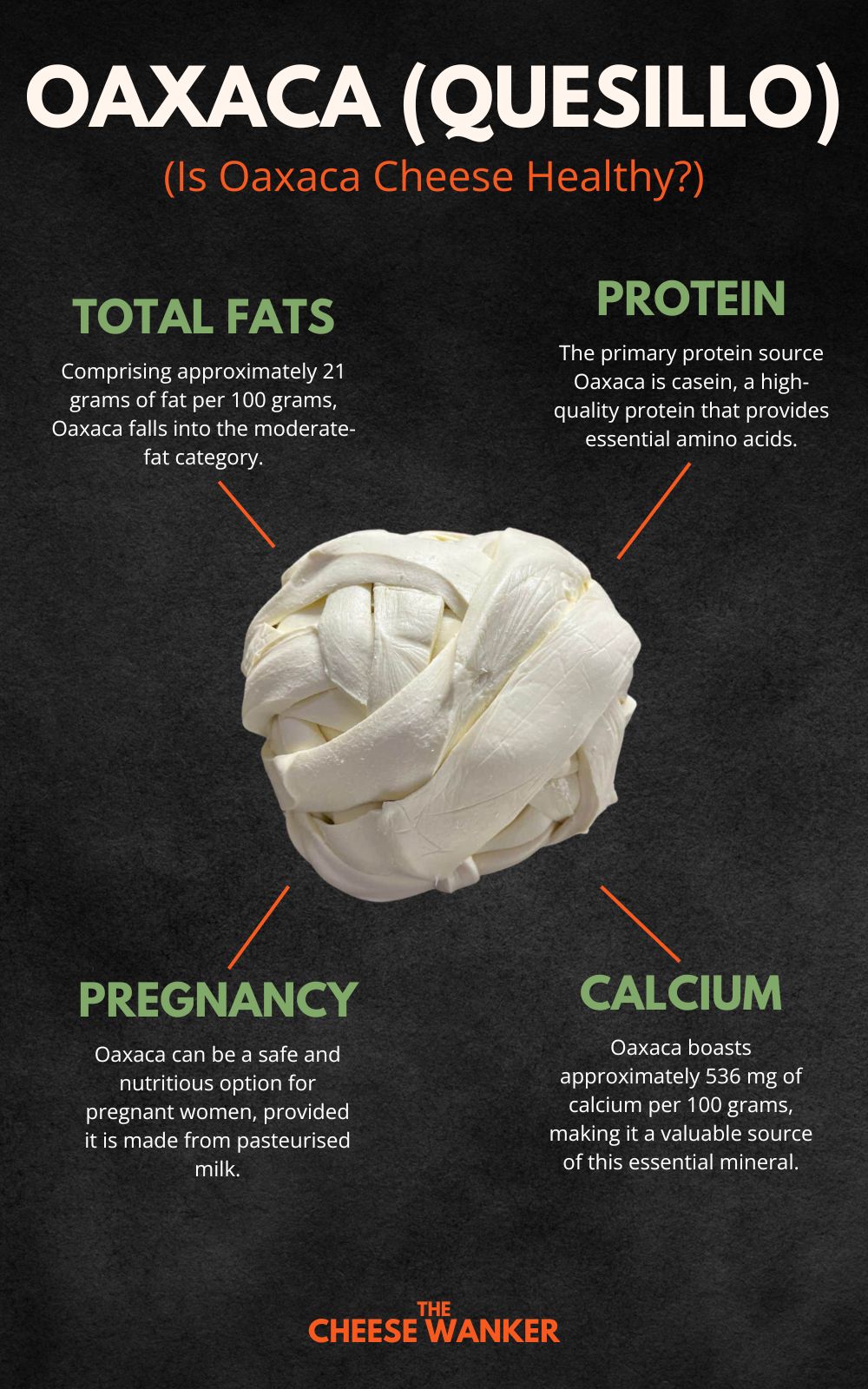
References
All the advice relating to what cheeses you can eat during pregnancy in this article is based on the recommendations by health authorities in Australia, the UK and the USA. If you are unsure about what you can or cannot eat, please consult your doctor.
Australia – FSANZ
United Kingdom – NHS
United Sates of America – FDA

